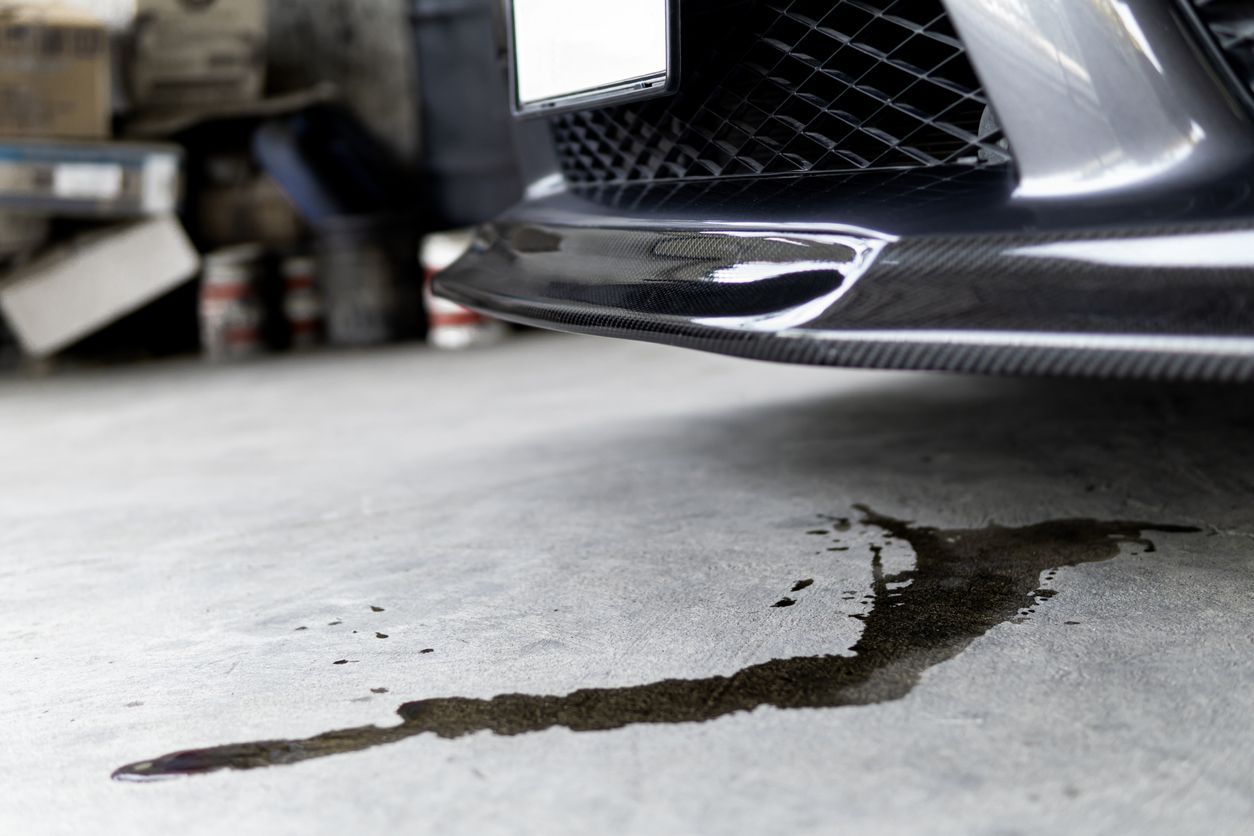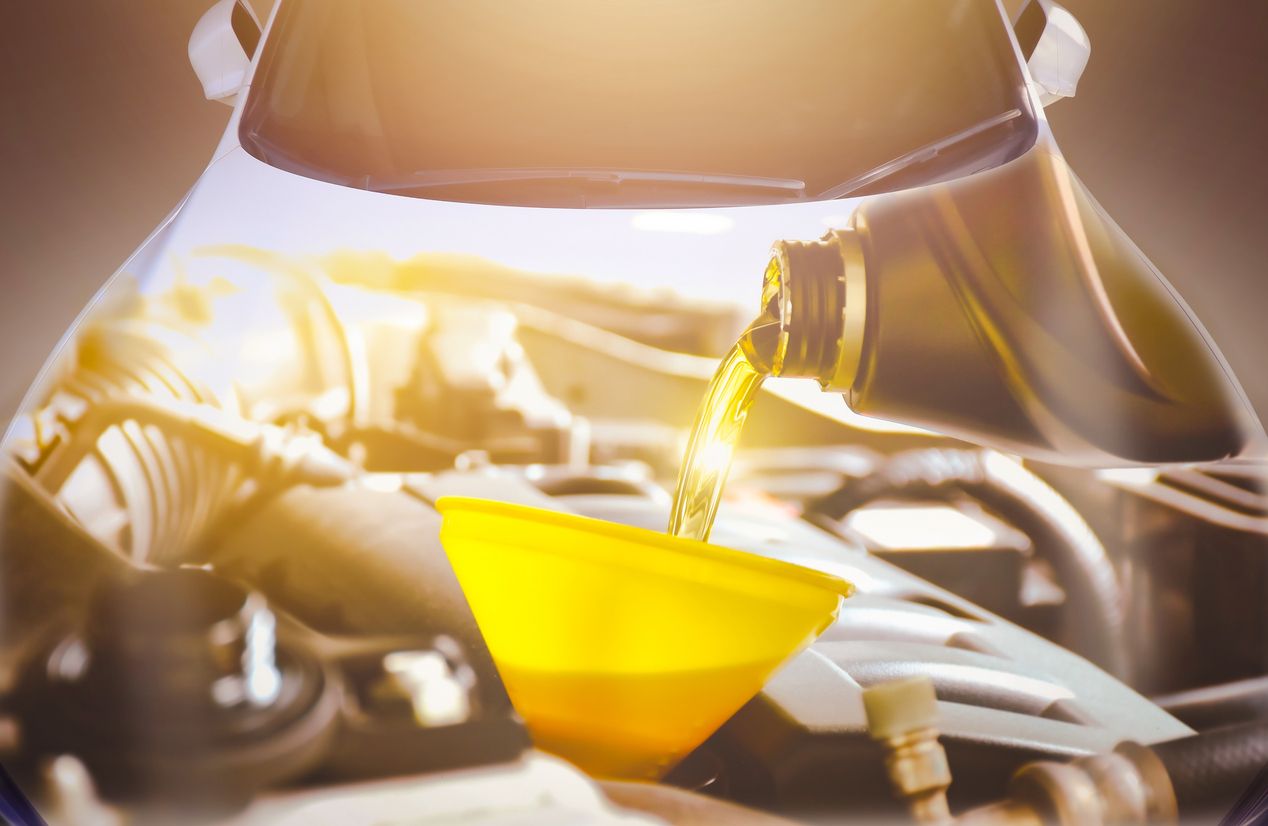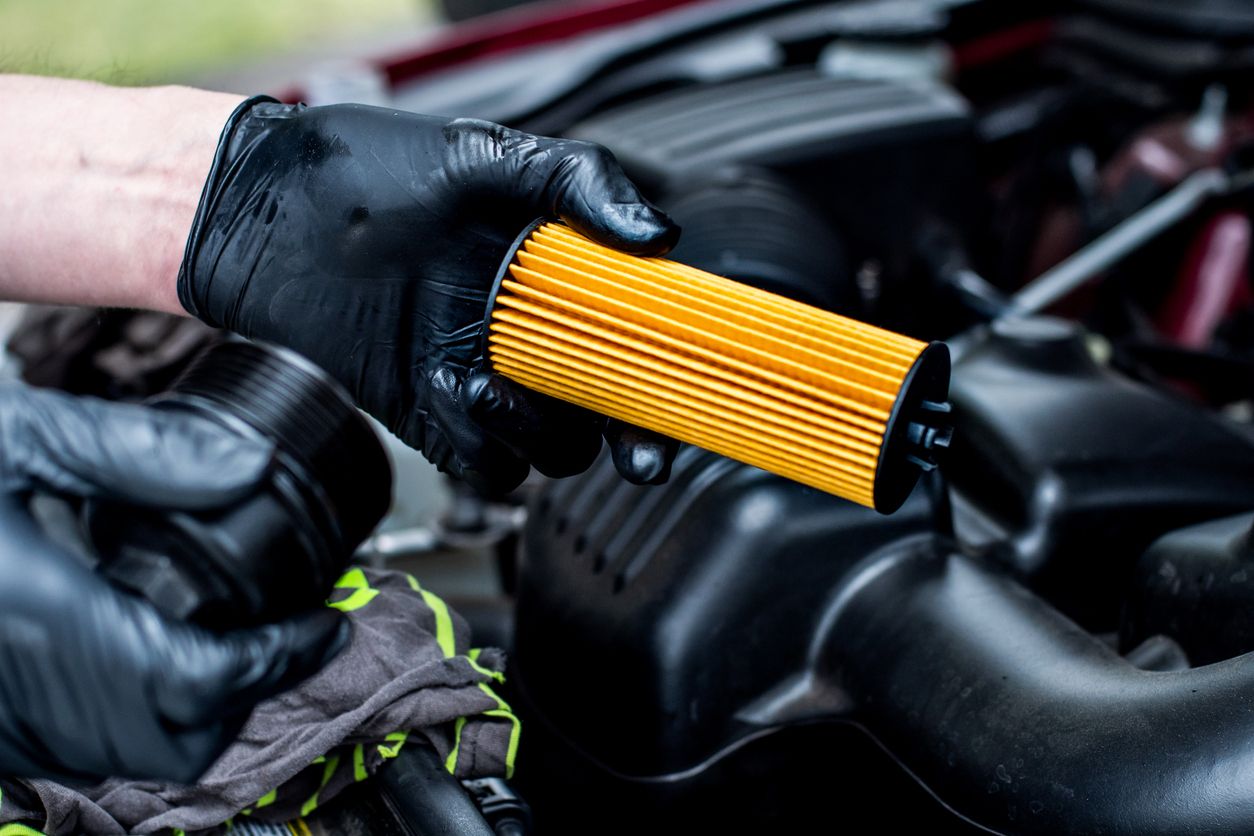It’s a good morning. You woke up early, had breakfast, and are on time for work — but when you pull out, you notice a new oil stain on your driveway. Oof! Though it might be easy to consider an oil leak an aesthetic inconvenience, it’s imperative that you don’t. Cars need oil to run properly, so if you’re losing yours, read on to learn about the most common culprits of oil leaks and what to do if you have one.
Why is My Car Leaking Oil When Parked?
If you’ve ever owned a car that burns oil, you know that oil loss can be a sneaky, invisible beast. Sometimes, though, oil loss isn’t so sneaky, and chooses to present itself as an unsightly dark stain on your driveway instead. Before you degrease and pressure wash that stain away, take a look at these four components — one of them could be the culprit of your discolored driveway and oily automobile.
1. Faulty Gaskets or Seals
Worn out gaskets and seals are possibly the most common cause of oil leaks, since they are subjected to extreme heat and pressure every time you drive. Some seals, like those found on timing chain covers can be difficult to access and are best left to a trained professional to diagnose and repair. Fortunately, crucial seals like those are designed to last the lifetime of your engine (so long as it’s maintained properly), so chances are it’s one of these three gaskets, instead:
- The Oil Pan Gasket, which seals the oil pan to the bottom of the crankcase.
- The Oil Pan Drain Plug, which enables oil to be drained from your oil pan. A loose oil pan drain plug can result in a leak. Additionally, oil pan drain plugs have their own gasket that can fail, cause leaks, or be accidentally left off.
- The Valve Cover Gasket(s), which seals your valve cover to your engine’s head. This type of gasket is found in your engine bay (for most vehicles), near the top of your engine. A leaky valve cover may be accompanied by the smell of burning oil, as oil can drip from this location onto your exhaust manifold(s).
2. Damaged Oil Filler Cap
Typically located on the top or side of an engine, an oil filler cap with damaged threads or o-rings may also be the source of your oil leak. If you have a faulty oil filler cap, you may notice oily belts and other components in your engine bay.
3. Damaged Oil Pan or Oil Filter
If your vehicle rides closer to the ground, a damaged oil pan or oil filter could be the culprit — especially if you recently scraped the bottom of your car on an unexpected speed bump, sidewalk, or other obstacle. When an oil pan is damaged, it can cause a crack in the aluminum pan or put a hole in a steel pan. Both of which can result in a reasonably sized oil leak. If you notice a massive puddle of oil underneath your vehicle, though, your oil pan or oil filter may have been punctured or cracked.
4. Bad Rear Main Seal
If everything else checks out, it’s possible that your leak is stemming from one of those crucial seals we mentioned earlier. Your rear main seal is responsible for keeping oil from leaking out the rear of your engine, where it mates with the transmission.
Depending on the potential severity of your rear main seal failure, you may notice small drips when your car is shut off, and larger puddles when it is parked but still running. This is because your vehicle’s oil level typically sits lower than the rear main seal when it’s turned off. When running, however, oil circulates throughout your engine — a hot, pressurized environment.
Now less viscous and being flung every which way, your oil can slip past the rear main seal and into the bellhousing of your transmission. Once the vehicle is shut off, oil drains back into the pan and stops exiting through the rear main seal, but the oil that accumulated in the transmission bellhousing continues to drip out when parked.
So, if you primarily notice your car leaking oil when parked and running, it might be due to a worn-out rear main seal. Though it may be tempting to top off your oil and keep driving, faulty rear main seals should be replaced as soon as possible, as they can experience failure and rapidly leak oil.
Generally, the transmission must be removed from a vehicle that needs its rear main seal replaced, so this repair is definitely best left up to the professionals at Firestone Complete Auto Care.
What to Do When Oil is Under A Car When Parked?: Call on Firestone Complete Auto Care
Finding the source of an oil leak can be a messy, time consuming process, but the professionals at Firestone Complete Auto Care have all the knowledge and experience to get you back where you belong — the driver’s seat. Our full service oil changes include a 19-point inspection that’s bound to find your leak, and once it’s fixed, we’ll be happy to help you stay on track of scheduled maintenance to prevent pesky leaks from popping up again.
Drive (and park) with confidence by scheduling an appointment at your local Firestone Complete Auto Care today!



